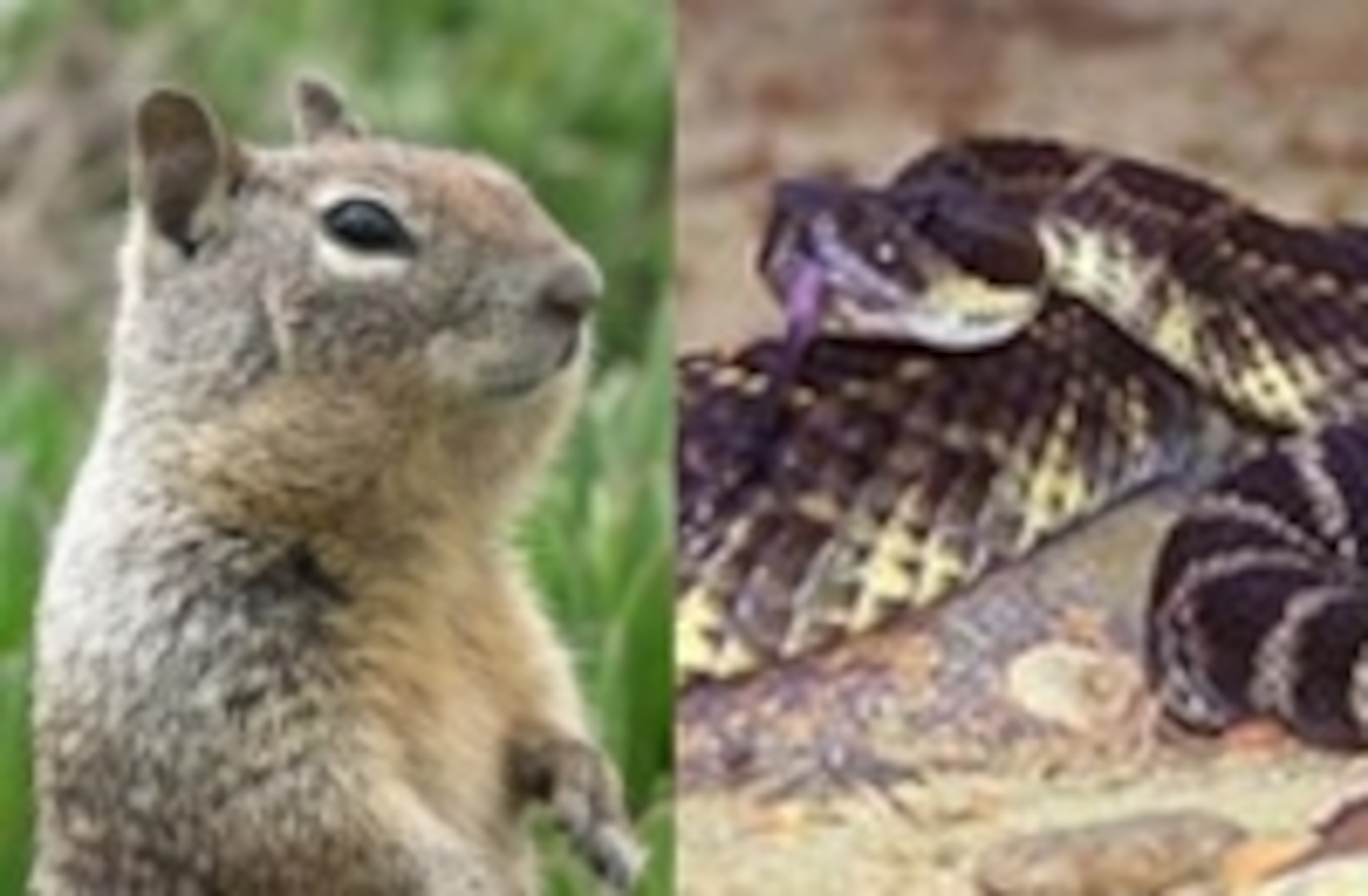Ground squirrels use infrared signals to fool heat-seeking rattlesnakes
It seems like an uneven match. In one corner, the unassuming California ground squirrel (Spermophilus beechyi), 30cm in length. In the other, the northern Pacific rattlesnake (Crotalus oreganos), more than twice the length of the squirrel, and armed with hinged fangs that pack a lethal venom. But thanks to a cunning adaptation, the squirrel often gets an unexpected upper hand in this bout.

Ground squirrels live in a series of burrows that keep them out of reach of most predators. Snakes, however, have exactly the right body plan for infiltrating long sinuous tunnels, and it’s not surprising that they are the squirrels’ major predators. It’s equally unsurprising that the squirrels have developed ways of defending themselves against snakes.
Adults have developed a certain degree of immunity to snake venom and their agility helps them avoid strikes. But their pups are still vulnerable and adults disguise their scents by chewing on the discarded skins of rattlers and licking them. When confronted, they harass the snake and wave about an upright tail. Among other benefits, this ‘tail-flagging’ tells the snake that it’s lost the element of surprise, alerts other squirrels and distracts the predator from vulnerable young.
But tail-flagging also has a hidden component that scientists have only just discovered. Aaron Rundus and colleagues from the University of California, Davis, found that the squirrels also heat up their upright tails, turning them into beacons of infrared light. It’s a countermeasure specifically evolved to exploit one of the rattlesnake’s deadliest abilities.
Rattlesnakes, like all pit vipers, have a pit organ on the side of each eye that can detect infrared radiation. These pits are superb tracking systems, allowing rattlers to hunt their prey in pitch blackness by following their body heat.
Rundus confronted ground squirrels with live rattlesnakes in a controlled laboratory environment, and filmed them with an infrared camera (right).
He saw that in these situations, the squirrels dilated the blood vessels in their tail, and pump in warm blood from their body cores. The result is that the temperature of the tail rises by several degrees, matching that of the rest of the animal. You can watch a Quicktime video of the tail-flagging in action.
The hot tail puts the snake on the defensive. For a start, its prey would suddenly appear to be much larger. And the squirrels don’t rely on a raised tail alone – they follow the signal by aggressive taunting the snake and kicking sand at it. Rundus speculates that eventually, the snake might associate these activities with each other, so that the raised tail alone would be enough to put it off.
Rundus tested the effects of the infrared signal using robotic squirrels programmed to mimic the tail-flagging and body temperatures of the real deals. Using these RoboSquirrels (right), he could carefully test the rattlers’ reactions.
Tail flagging made hunting snakes more cautious, but the addition of the infrared signal really put them on the defensive. They spent less time moving, more time in a coiled and guarded posture and gave off their eponymous defensive rattle.
There is no doubt that the infrared signal is designed to take advantage of the rattlesnake’s heat-seeking powers. For a start, they don’t bother with their infrared beacons on species like the gopher snake that lack heat-sensitive pits (Quicktime video)- like all good communicators, they know to tailor their messages to their audience.
And the squirrels are more likely to tail flag in dark conditions, such as the twilight hours when rattlers do most of their hunting. In these times, the sight of the tail doesn’t make any difference, but the infrared bit would stand out even more strongly against the cooler night air. By adding an infrared element to their signal, the squirrels have ensured that it can even be used at night.
This is the first time that an animal has been known to use infrared signal to defend itself against a predator and it’s unlikely to be the last. It’s a wonderful example of the many evolutionary arms races between predator and prey – the heat-seeking adaptations of rattlesnakes make them master rodent hunters, but in this case, their own senses work to their disadvantage.
More on animal defences:
- Aphids defend themselves with chemical bombs
- Moths mimic each others’ sounds to fool hungry bats
- Eavesdropping songbirds get predator intel from overheard calls
- The mimic octopus – a master of disguise
Reference: Rundus, Ownings, Joshi, Chinn & Giannini. 2007. Ground squirrels use an infrared signal to deter rattlesnake predation. PNAS doi.10.1073/pnas.0702599104
